Paris doesn’t sleep when the sun goes down - especially if you’re hungry.
Most visitors think of Paris as croissants at dawn, leisurely lunches at sidewalk cafés, and elegant dinners under chandeliers. But the real magic happens after 11 p.m., when the city shifts into a different rhythm. The lights dim in the museums, the theaters close, but the kitchens? They’re just getting started. For food lovers, Paris after dark isn’t just about bars and cocktails - it’s about steaming bowls of gratin dauphinois, crispy crêpes dusted with sugar, and warm churros dipped in thick chocolate. This isn’t tourist bait. These are the places locals go when they’re done with wine and want something real.
Where the locals eat after midnight
If you want to eat like someone who’s lived here for years, skip the flashy restaurants with English menus. Head to Le Comptoir du Relais in Saint-Germain. It’s tiny, no reservations, and the chef, Yves Camdeborde, still works the line at 1 a.m. on weekends. Order the foie gras torchon with brioche - it’s rich, smooth, and perfect with a glass of Sauternes. You’ll see bankers, artists, and even chefs from Michelin-starred spots lining up at the counter. It’s not cheap, but it’s the kind of place you remember for years.
Over in the 10th arrondissement, Le Baratin is the anti-restaurant. No website. No reservations. Just a chalkboard menu that changes nightly. It’s run by a former sommelier and a chef who used to work at L’Ambroisie. They serve simple things: duck confit, roasted beets with goat cheese, and a cheese plate that changes daily. The wine list? 90% French, 100% interesting. You’ll pay €40 for dinner and leave feeling like you discovered a secret.
Midnight snacks you can’t miss
Paris has a deep tradition of late-night snacks - not fast food, but proper, comforting bites made with care. At La Crêperie de Josselin in Montmartre, the lines start forming around 11:30 p.m. The batter is made with buckwheat, the butter is salted, and the sugar is coarse. They fold the crêpes right in front of you. Try the complet: ham, cheese, and a fried egg on top. It’s messy. It’s perfect.
For something savory, head to Le Petit Châtelet near the Seine. They’ve been serving croque-monsieur since 1952. The version here is grilled until the cheese oozes, then topped with a thin layer of béchamel. It’s not fancy, but it’s the kind of thing that fixes a bad night. Eat it standing at the counter with a glass of cheap red wine. No one will judge you.
And then there’s the churros. Not the ones from tourist traps near the Eiffel Tower. Go to Churros de Madrid on Rue de la Villette. They’re fried fresh every 15 minutes. The outside is crisp, the inside is soft, and the chocolate dipping sauce is dark, almost bitter - just how the Spanish like it. You’ll see groups of friends laughing, sharing a plate, and not caring that it’s 2 a.m.

Where to find the best cheese and charcuterie after hours
Paris is full of cheese shops that close at 8 p.m. But a few stay open late for the hungry and the curious. La Fromagerie du Marché in the 11th arrondissement is one. The owner, Marie, knows every wheel of cheese by heart. She’ll let you taste a slice of Époisses - stinky, creamy, and unforgettable - and then wrap up a small piece for you to take home. Pair it with a baguette and a bottle of Beaujolais from the corner bistro. Eat it on a bench by the canal. No one will bother you.
For charcuterie, La Boucherie de la Butte in Montmartre stays open until 1 a.m. on Fridays and Saturdays. They make their own pâté, rillettes, and saucisson. Get the saucisson aux noix - walnut-studded, slightly sweet, and perfect with a crusty roll. It’s not fancy, but it’s the kind of food that tastes like it was made by someone who cares.
Bars that serve food - not just drinks
Most Parisian bars serve olives and peanuts. But a few have turned into late-night kitchens. Le Baron Rouge in the 12th arrondissement is one. The owner, a former chef from Lyon, runs a small kitchen behind the bar. At midnight, he starts making quenelles de brochet - delicate fish dumplings in a creamy sauce. It’s rare to find this outside Lyon, and rarer still at 1 a.m. in Paris. Order it with a glass of Alsatian wine. It’s the kind of meal that makes you feel like you’ve been let in on something special.
Another hidden gem is Le Comptoir Général in the 10th. It’s part bar, part bookstore, part Moroccan-inspired kitchen. The menu changes weekly, but you’ll always find tajine with apricots and almonds, or harira soup - a rich, spiced broth that warms you from the inside. The lights are low, the music is jazz, and the vibe is cozy. You’ll want to stay all night.
What to avoid - and why
Not every place open late is worth it. Skip the kebab shops near Gare du Nord. The meat is often pre-cooked, the bread is soggy, and the sauce is just mayo with paprika. Same with the “French fries” sold in plastic cups near tourist spots. They’re frozen, fried twice, and served with ketchup. You’ll pay €8 for a greasy mess.
Avoid restaurants that have “Parisian Cuisine” in big letters on the sign. If it’s targeting tourists, it’s not serving the real thing. Look for places with no English menu. Look for places where the staff doesn’t smile too much - they’re not trying to sell you anything. They’re just cooking.
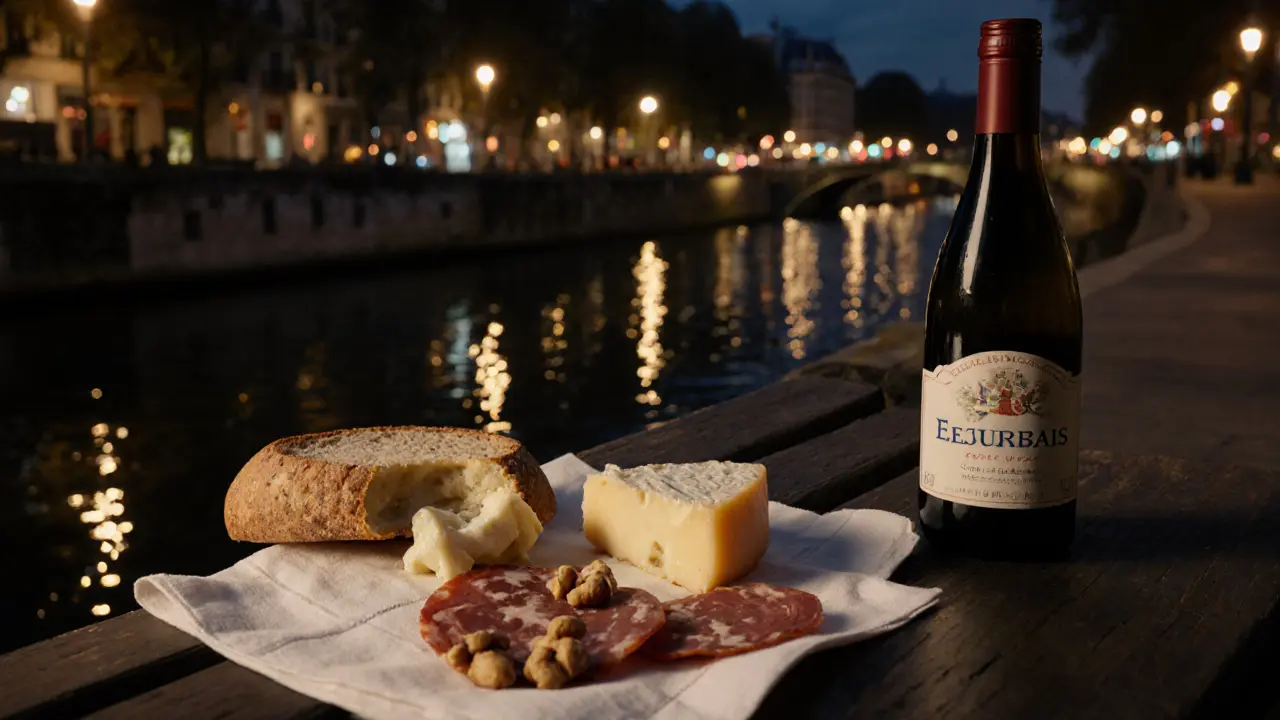
How to plan your late-night food crawl
You don’t need a map. You need a plan. Start around 9:30 p.m. with a drink and a small bite - maybe an oyster at Le Comptoir du Relais. Then walk to a crêperie by 11 p.m. After that, hit a cheese shop or butcher for a snack to take with you. Finish at a bar that serves real food, like Le Baron Rouge. Walk slowly. Let the city guide you.
Wear comfortable shoes. The streets are cobblestone. Carry cash. Many places don’t take cards after midnight. And don’t rush. The best food in Paris after dark isn’t about speed. It’s about time - the kind you can’t buy, only steal from the night.
Seasonal treats you’ll only find at certain times
Paris changes with the seasons, and so do its late-night offerings. In winter, look for châtaignes caramélisées - candied chestnuts sold by street vendors near Notre-Dame. They’re sweet, smoky, and warm in your hands. In summer, glaces - artisanal ice cream - stay open until 2 a.m. at Gelateria del Teatro in the Marais. Try the ricotta with figs or the basil with peach. It’s not what you expect, but it’s exactly what you need.
And in autumn, the champignons de Paris - wild mushrooms - appear on menus. At Le Baratin, they sauté them in garlic butter and serve them over toast. It’s simple. It’s earthy. It’s the taste of Paris in November.
Final tip: Eat where the workers eat
Paris has thousands of barmen, cleaners, chefs, and delivery drivers who work the night shift. They don’t go to fancy restaurants. They go to places like Le Petit Marché in the 13th - a tiny spot with five stools and a grill. They serve panini with ham, cheese, and pickled peppers. It costs €6. The owner, a retired chef from Algeria, makes it with love. You’ll see nurses, taxi drivers, and artists eating there at 3 a.m. That’s where you should be too.
What time do most Parisian restaurants close at night?
Most regular restaurants close between 10 p.m. and 11 p.m. But places that specialize in late-night food - like crêperies, cheese shops, and casual bistros - stay open until 1 a.m. or later, especially on weekends. Some, like Le Baratin or Le Comptoir du Relais, serve food until 2 a.m. on Fridays and Saturdays.
Is it safe to eat out late in Paris?
Yes, it’s perfectly safe. Paris is one of the safest major cities in Europe at night, especially in areas like Saint-Germain, Le Marais, Montmartre, and the 11th arrondissement. Stick to well-lit streets and places where locals are eating. Avoid isolated alleys near train stations after midnight. The food spots listed here are all in safe, popular neighborhoods.
Do I need to make reservations for late-night food spots?
Almost never. Most late-night spots in Paris are small, casual, and first-come, first-served. Le Comptoir du Relais doesn’t take reservations. Le Baratin doesn’t even have a website. Just show up. If there’s a line, join it - it’s a good sign. The only exception is if you’re going to a Michelin-starred place that offers late service, but those are rare and expensive.
Can I find vegetarian late-night food in Paris?
Yes, but you’ll need to know where to look. Le Baratin often has seasonal vegetable dishes like roasted beets or grilled eggplant. Churros de Madrid serves plain churros with chocolate - no meat. Crêperies offer sweet crêpes with fruit or Nutella, and savory ones with cheese and mushrooms. Le Comptoir Général has vegetarian tajines and harira soup. Ask for “végétarien” - most places are happy to accommodate.
What’s the best way to pay for late-night food in Paris?
Cash is king after midnight. Many small spots don’t have card machines, or they turn them off late at night. Even if they accept cards during the day, they might not after 11 p.m. Carry at least €20-€30 in euros. ATMs are plentiful, but avoid those in tourist areas - they charge high fees. Stick to bank ATMs near metro stations.
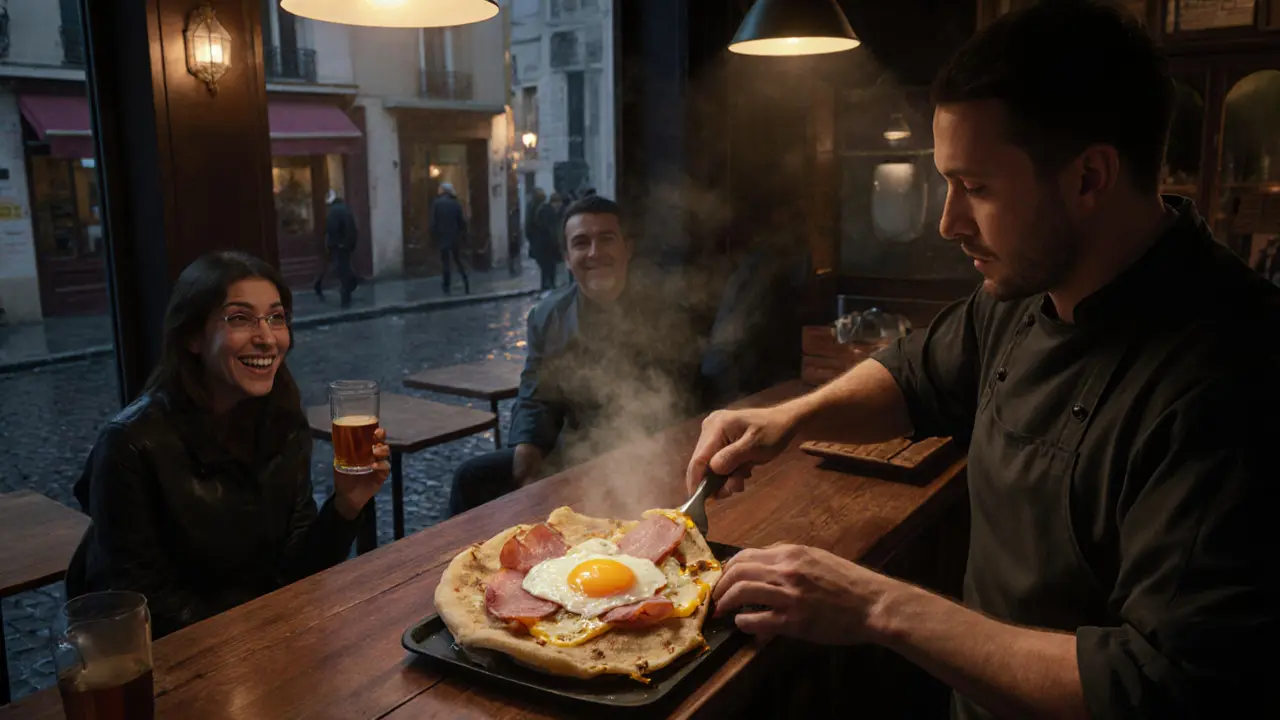
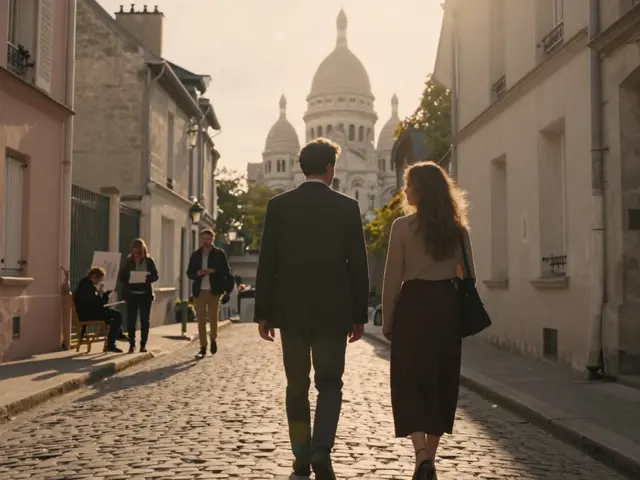

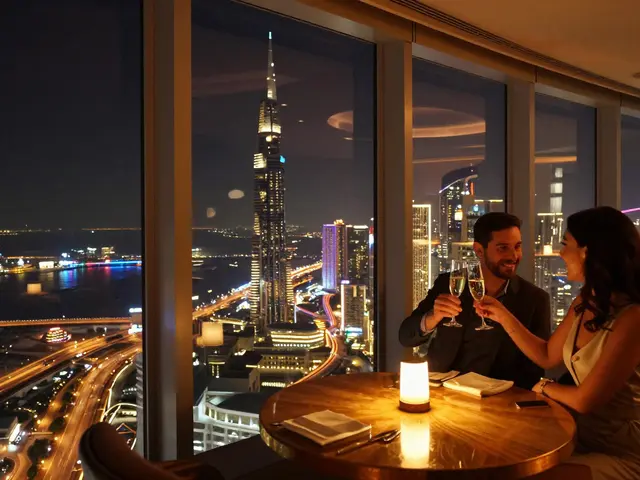

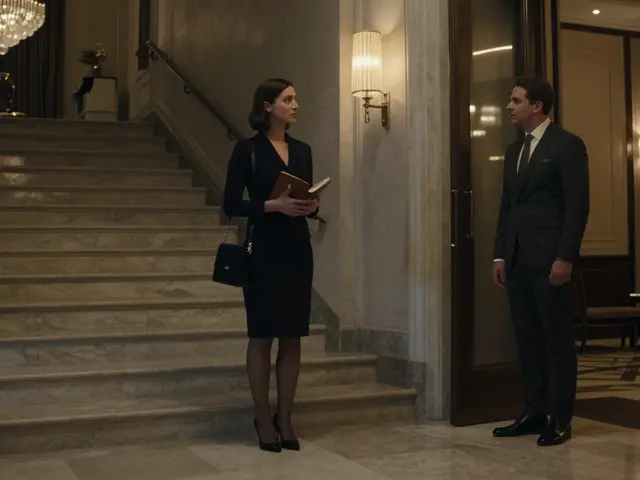

Write a comment